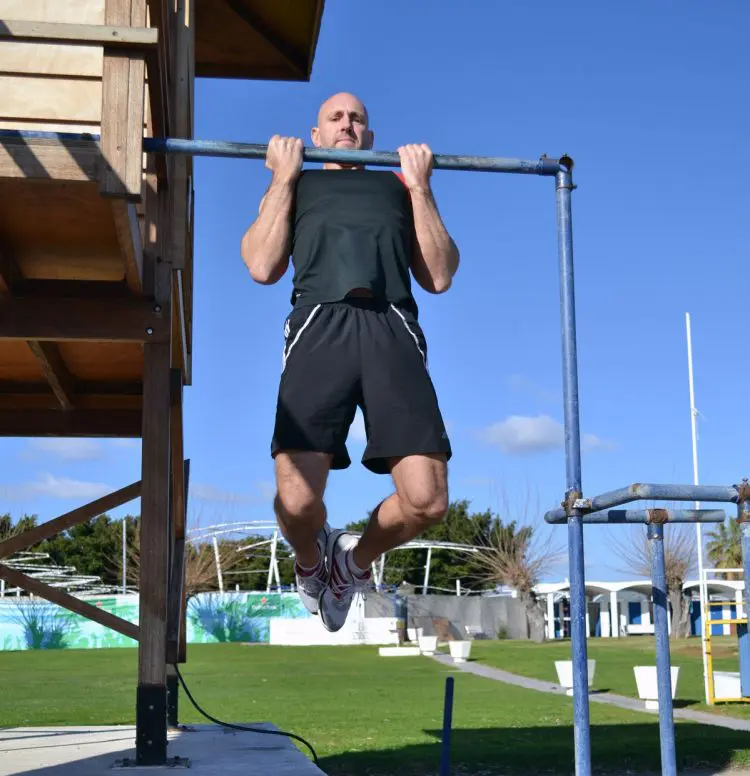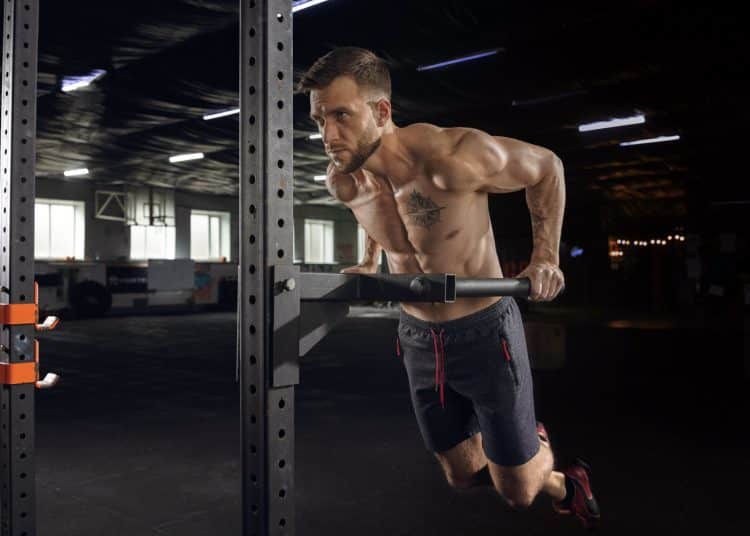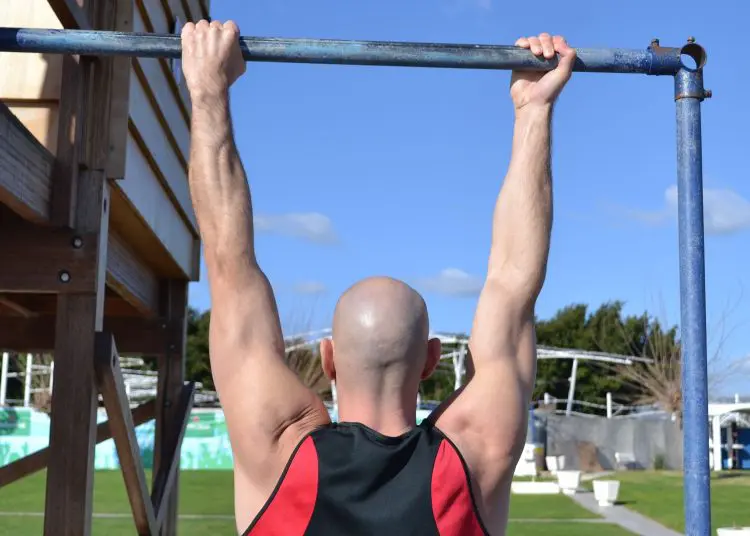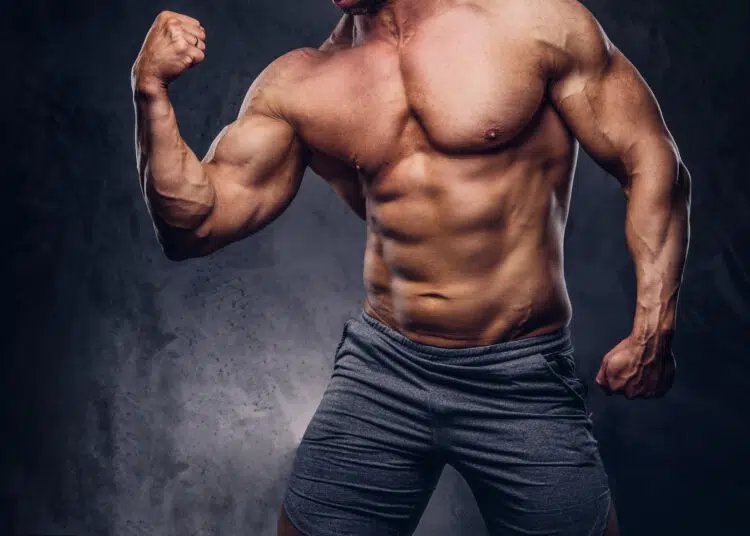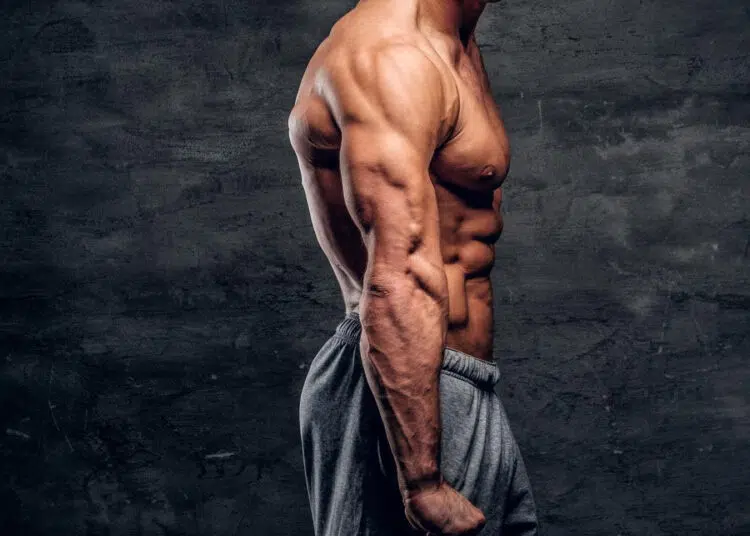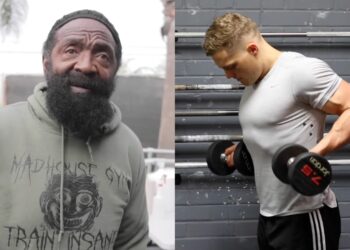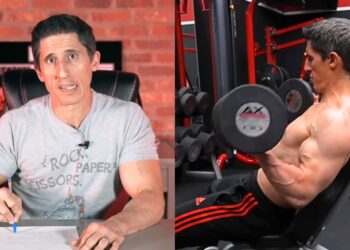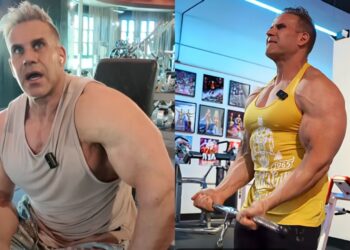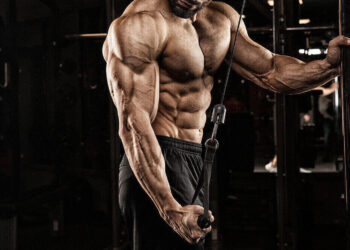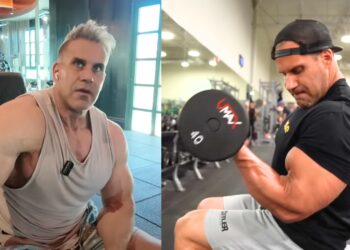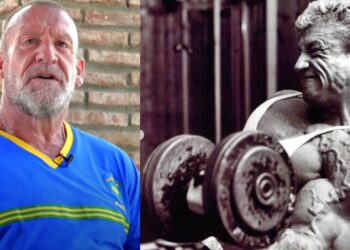Go to any gym, and you’ll see exercisers of all shapes, sizes, and ages training their biceps and triceps. Some will be bodybuilders trying to increase arm size, while others will be athletes who want to get stronger. Some will be recreational lifters who just want to look and feel fit.
Regardless, arm training is hugely popular and incredibly satisfying. I mean, who doesn’t enjoy a sleeve-stretching arm pump?
When it comes to building stronger, more muscular, or better-toned arms, biceps curls and triceps extensions are the exercises of choice. Of course, there are dozens—maybe hundreds—of variations of these exercises. But when you get down to the nitty-gritty of arm training, most people work their arms the same way. (Check also: Arm Exercise Library)
As a veteran personal trainer and lifelong exerciser, I enjoy arm day as much as the next person. However, I’m also frustrated by my recent lack of progress. It’s been months since I saw any changes in my arm size, shape, or strength.
This inspired me to seek an alternative way to train my arms. After all, as the saying goes, “The definition of insanity is doing the same thing over and over again and expecting different results.”
So, I decided to replace my usual biceps curls and triceps extensions-based arm workouts with two completely different exercises—chin-ups and parallel bar dips. While chin-ups and dips are compound exercises, they’re heavily arm-centric, making them a great alternative to isolation moves.
Level Up Your Fitness: Join our 💪 strong community in Fitness Volt Newsletter. Get daily inspiration, expert-backed workouts, nutrition tips, the latest in strength sports, and the support you need to reach your goals. Subscribe for free!
In this article, I reveal the effect of doing chin-ups and dips instead of curls and extensions for a month.
Are Chin-Ups and Dips Really Arm Exercises? Here’s Why They Work
Chin-ups aren’t a conventional biceps exercise, and dips are often seen as a chest move. But that doesn’t mean they won’t build impressive arms.
Chin-Ups for Bulging Biceps
If you take a moment to examine the arm action during chin-ups, you’ll soon see that it’s actually very similar to curls. However, instead of curling a weight up to your shoulders, you’re curling your entire body up to a bar. The grip—supinated or palms up–is very similar, too. All in all, despite being classed as a back exercise, chin-ups are a superb alternative for curls.
Related: Master Chin-Ups: Sculpt Your Back and Arms for Maximum Gains
Dips for Killer Triceps
Dips are an awesome chest exercise and were how many bronze and silver-era bodybuilders trained their pecs. In fact, legendary bodybuilding coach Vince Gironda believed that dips were so effective that he all but banned the bench press from his gyms.
That said, dips are also a fantastic triceps exercise, especially if you keep your torso upright. This limits chest recruitment and puts more stress on your arms. Again, if you examine the movement, you’ll see that your triceps have to work hard to straighten your elbows, making them an excellent triceps extension replacement.
Related: Chest Dips vs. Triceps Dips – What’s the Difference?
More Weight = More Gains!
The main advantage of chin-ups and dips is that they allow you to lift heavier loads than most conventional biceps and triceps exercises. For example, I can curl a 90-pound barbell but do chin-ups with my entire 180-pound body weight. The same is true of dips versus most triceps exercises.
Research shows that lifting heavier weights is one of the most effective ways to trigger muscle growth (1). Greater loads create more muscle tension, which is a critical driver of progress.
So, with that in mind, curls and extensions were out and for one month, my arm workouts were all about chin-ups and dips.
My Four-Week Chin-up and Dip-Only Arm Training Plan
I usually train my arms once a week as part of a five-day body part split:
- Monday: Chest and Shoulders
- Tuesday: Legs (Quads)
- Wednesday: Back
- Thursday: Rest
- Friday: Legs (Hamstrings)
- Saturday: Arms and core
- Sunday: Rest
As this routine fit my work and home schedule, I stuck with it for my one-month arm training experiment. I avoided chin-ups on back day and dips on chest day to ensure they remained the focus of my arm workouts.
Workout-wise, I still wanted my arm workouts to be fun and interesting, so I created the following four chin-up and dip-based programs. I did each one once:
Arm Workout #1 – High Volume Chin-Up and Dip Descending Pyramid
Aim: Complete the following descending rep scheme as fast as possible. Rest only as long as necessary between sets. Use rest/pause to complete sets if necessary. Only move on to the next exercise when all reps are completed.
- 12 chin-ups
- 12 dips
- 11 chin-ups
- 11 dips
- 10 chin-ups
- 10 dips
- 9 chin-ups
- 9 dips
- 8 chin-ups
- 8 dips
- 7 chin-ups
- 7 dips
- 6 chin-ups
- 6 dips
- 5 chin-ups
- 5 dips
- 4 chin-ups
- 4 dips
- 3 chin-ups
- 3 dips
- 2 chin-ups
- 2 dips
- 1 chin-up
- 1 dip
Arm Workout #2 – Weighted 5 x 5s
Aim: Do five sets of five reps using added weight to provide additional overload. Increase weight in the first two sets, then maintain a heavy load for the final three. Use a weighted vest or weight belt as preferred. Rest 2-3 minutes between sets.
For example:
- 1st set – chin-ups: 5 reps 10 pounds
- 1st set – dips: 5 reps 10 pounds
- 2nd set – chin-ups: 5 reps 20 pounds
- 2nd set – dips: 5 reps 20 pounds
- 3rd, 4th, and 5th set – chin-ups: 5 reps 25 pounds
- 3rd, 4th, and 5th set – dips: 5 reps 25 pounds
Arm Workout #3 – Rep Ladders
Aim: Complete four rep ladders of chin-ups and dips to failure. Do one rep, rest for 10-15 seconds, and then do two reps. Rest again, and then do three reps. Keep adding one rep until you are unable to continue. Repeat this process with dips. Rest for 2-3 minutes and repeat the process, starting back at one rep. Perform four ladders per exercise.
For example:
Chin-ups
- 1 rep
- Rest 10-15 seconds
- 2 reps
- Rest 10-15 seconds
- 3 reps
- Rest 10-15 seconds
- 4 reps
- Rest 10-15 seconds
- 5 reps
- Rest 10-15 seconds
- 6 reps
- Rest 10-15 seconds
- Can’t do 7 reps (repeat process with dips)
Arm Workout #4 – Straight Sets with a Twist
Aim: Do one set of chin-ups to failure, noting the number of reps performed. Rest 90 seconds and then do another set, attempting to match the number of reps performed in the first set. If you can’t match your previous set, use rest-pause to complete the remaining reps. Rest and repeat the process, completing four sets.
For example:
Level Up Your Fitness: Join our 💪 strong community in Fitness Volt Newsletter. Get daily inspiration, expert-backed workouts, nutrition tips, the latest in strength sports, and the support you need to reach your goals. Subscribe for free!
Dips
- 1st set – 15 reps (failure)
- 2nd set – 12 reps (failure) plus 3 reps after a short rest
- 3rd set – 9 reps (failure) plus 4 and 2 reps after a short rest
- 4th set – 8 reps (failure) plus 3, 2, and 2 reps after short rest
Results From Replacing Arm Workouts with Chin-Ups and Dips for A Month
So, for four weeks, I did no biceps dumbbell, barbell, or cable curls, and no triceps extensions, pushdowns, or skull crushers. Instead, the only arm exercises I used were chin-ups and dips.
How did this affect me? Did my arms grow? Did I get stronger? Keep reading to find out!
Muscle Growth
While I cannot determine whether my biceps or triceps grew the most, my arms were measurably bigger by the end of my one-month chin-up and dip experiment. Both arms were about half an inch larger and visibly more muscular.
Half an inch might sound unimpressive, but remember that it’s been a long time since I’ve seen any arm muscle growth, so I’m counting this as a major win.
However, it wasn’t just my arms that got bigger—my chest and back grew, too. This is probably because they were trained twice as often during my month of chin and dip-based arm training. After all, chin-ups are one of the best back exercisers around, and dips are a proven chest builder.
Increased Chin-Up and Dip Performance
Making chin-ups and dips the focus of a workout did wonders for my performance of these exercises. By the end of the month, I was able to pump out more reps and could also use heavier loads when I did them with weight.
I suspect that, if I followed this training program for an additional month or two, I’d surpass my previous chin-up and dip repetition records.
A Stronger Grip
I track my grip strength using a handgrip dynamometer. It’s an important metric that may help predict longevity. Before the start of this experiment, my hand strength was already above average – 121 pounds. However, at the end of the month, it increased to 145 pounds, putting me in the elite category for my age.
I don’t believe that dips did much for my grip. Rather, it was all the chin-ups, especially with weight, that increased my hand strength.
Related: Average Grip Strength in Men and Women: Discover the Secrets of Strong Hands
Better Shoulder Mobility
Both dips and chin-ups involve a large range of motion at the shoulder joint. Dips provide a deep stretch for your pecs and deltoids, whereas full-range chin-ups give your lats a good stretch.
These large movements improved my shoulder mobility, which was evident when I attempted overhead squats—an exercise I usually struggle to perform well. My experiences with this are not unique, and research supports the idea that full-range strength training can be as effective as static stretching for improving flexibility and mobility (2).
And the Downsides…
While my experiences from doing nothing but chin-ups and dips for my arms were mostly positive, I did experience a couple of downsides, too.
Firstly, dips are not the most shoulder-friendly of exercises, and chin-ups tend to put a lot of stress on your elbows. As such my joints were starting to feel the strain by the end of my month-long experiment. In comparison, most biceps curls and triceps extension exercises are much easier on your joints.
Related: 13 Ways to Avoid Shoulder Pain in The Gym
Secondly, I missed doing conventional arm exercises. Curls, pushdowns, etc., are enjoyable to do, whereas dips and chin-ups are just plain hard work! Of course, it was the intensity of these exercises that was responsible for my gains, but that didn’t mean that I wouldn’t have appreciated a let-up in training difficulty.
Finally, while both chin-ups and dips proved to be effective muscle builders, I’m not sure that they’re the best exercises for sculpting an aesthetic physique. Studies suggest that you need to train a muscle from a variety of angles to develop it fully—a concept called regional hypertrophy (3).
Relying on just two exercises means that some parts of the target muscles may develop more than others. Of course, this is more of a long-term concern rather than an issue during my month-long experiment.
Closing Thoughts
Biceps curls and triceps extensions are not the only way to build strong, muscular arms. Dips and chin-ups can work, too.
If you’re stuck in a rut and direct arm training is failing to deliver the results you want, dropping isolation exercises from your program and focusing on more compound lifts could be your ticket to getting back on the gains train.
However, while this is a good approach for busting through plateaus, in my experience, which is backed by science, isolation exercises are still an effective way to build great-looking arms (4).
Related: Build Sleeve-Busting Arms: The 6 Exercises You MUST Include in Your Next Arm Workout
References:
1 – Schoenfeld BJ. The mechanisms of muscle hypertrophy and their application to resistance training. J Strength Cond Res. 2010 Oct;24(10):2857-72. doi: 10.1519/JSC.0b013e3181e840f3. PMID: 20847704.
2 – Afonso J, Ramirez-Campillo R, Moscão J, Rocha T, Zacca R, Martins A, Milheiro AA, Ferreira J, Sarmento H, Clemente FM. Strength Training versus Stretching for Improving Range of Motion: A Systematic Review and Meta-Analysis. Healthcare (Basel). 2021 Apr 7;9(4):427. doi: 10.3390/healthcare9040427. PMID: 33917036; PMCID: PMC8067745.
3 – Zabaleta-Korta A, Fernández-Peña E, Torres-Unda J, Francés M, Zubillaga A, Santos-Concejero J. Regional Hypertrophy: The Effect of Exercises at Long and Short Muscle Lengths in Recreationally Trained Women. J Hum Kinet. 2023 Jul 15;87:259-270. doi: 10.5114/jhk/163561. PMID: 37559762; PMCID: PMC10407320.
4 – Mannarino P, Matta T, Lima J, Simão R, Freitas de Salles B. Single-Joint Exercise Results in Higher Hypertrophy of Elbow Flexors Than Multijoint Exercise. J Strength Cond Res. 2021 Oct 1;35(10):2677-2681. doi: 10.1519/JSC.0000000000003234. PMID: 31268995.

